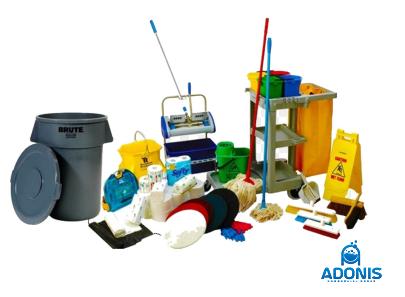As you know, when deciding for buying handwash powders you better choose Sainsbury’s due to its many advantages over any other mart.
But how Sainsburys started and how it grew over time? With the opening of their shop at 173 Drury Lane in Holborn, London, in 1869, John James Sainsbury and his wife Mary Ann founded Sainsbury’s as a partnership.
Fresh food was his first focus, but he gradually added packaged goods like tea and sugar to his inventory. The motto of his business was “Perfect quality, reduced pricing,” as shown on a sign outside his first store in Islington.
It was particularly innovative because, unlike its fiercest rivals Home and Colonial, who only carried five own-brand products, its shops had a large selection of own-label products.

The countertops at Sainsbury’s were made of marble, the flooring was mosaic, and the walls were white-tiled rather than having sawdust floors and wooden counters. Even the white aprons that the staff wore as a uniform.
Stores began to resemble one another so that people could recognize them throughout London, a tall cast-iron “J. SAINSBURY” sign was placed on every one of their locations so that their stores could be seen on coaches and omnibuses, and round-the-back deliveries began to add convenience and not irritate Sainsbury’s competitors due to the latter’s popularity.
When J. Sainsbury became the biggest food firm in the UK in 1922, it was formed as a private company called “J. Sainsbury Limited.”
Each shop at this point featured six divisions: dairy, bacon and hams, chicken and game, cooked meats, and fresh meats. When John James bought a grocer’s branch at 12 Kingsland High Street in Dalston, it was the first time that groceries had been available.
Due to the limited number of automobiles available at the time, home delivery was an option at every business. Sites were picked quite carefully, with a parade center preferred over a corner business. As there was no refrigeration, this made it possible to show a broader variety of goods that could be kept cold throughout the summer.

There were 128 stores present at the time of John James Sainsbury’s passing in 1928. Keeping the stores properly illuminated was reportedly his final command. John Benjamin Sainsbury, who had joined his father in the business in 1915, took his position as the new owner.
The firm continued to hone its product offering and retain its leadership in terms of shop design, convenience, and cleanliness throughout the 1930s and 1940s with John Benjamin Sainsbury, the oldest son of John James Sainsbury, now running the business.
The founder’s grandson Alan Sainsbury, afterward known as Lord Sainsbury of Drury Lane, and his brother Sir Robert Sainsbury took over as joint managing directors of Sainsbury’s in 1938 after their father, John Benjamin Sainsbury, had a small heart attack.
Many of the Sainsbury’s employees who were males were summoned to serve in the National Service with the start of World War II, and they were replaced by women.
Due to the fact that the majority of Sainsbury’s shops operated in the London region and were bombed or otherwise destroyed, the company struggled during the Second World War despite its reputation for offering high-quality items at reasonable costs.
After the death of his father, John Benjamin Sainsbury, in 1956, Alan Sainsbury assumed the position of chairman. The UK’s first self-service supermarkets were built by Sainsbury’s in the 1950s and 1960s.
A self-service supermarket of 10,000 square feet (930 square meters) would be the future of Sainsbury’s, according to Alan Sainsbury, who realized the advantages of such shops when traveling in the United States of America.
Eventually, a parking lot would be added for additional convenience. 1950 saw the opening of Croydon’s first self-service location.

Following an 18-month business assessment, it was revealed in September 2011 that the “Try Something New Today” motto will be replaced with “Live Well For Less.” From September 16, the tagline will be prominently displayed on till receipts and implemented gradually.
Sainsbury’s opened their 1000th shop in Irvine, Scotland, on November 30, 2011, marking the first achievement in its 2020 strategy. For the first four days of December, Sainsbury’s boosted their worker discount to 20% as a way of recognizing this.
Benefits of Sainsbury’s
The company might save money if… Sainsbury, who asserts that consumer behavior has changed and that the Middleborough site is “no longer practicable,” lowers its price point…
more details
Traditional physical retail firms have suffered their biggest danger ever since the World Wide Web’s beginnings 20 years ago. Digital technologies like smartphones, touchscreens, and information infrastructure are predicted to revolutionize retail enterprises in the future.
Businesses that shifted their operations online were able to preserve customer connections and even found it easier to draw in the next generation of customers, a younger demographic used to making all of their purchases online. Web-based shopping, as compared to other sectors, has largely consumed some while hardly touching others (such as the food, DIY, and health and beauty sectors, which each make up less than 6% of online retail sales).
The music and video industry has witnessed the biggest disruption with an 80% share (which is to be anticipated given the developments in digital content) and is then followed by books, electrical, and other industries.
Customers like online shopping because it is flexible and convenient, and they can compare prices and use coupons whenever and wherever they choose (as long as they have access to the internet). However, parties other than consumers may benefit from internet shopping.
Environmental analysis is a strategic tool. Sainsbury may utilize it to identify every internal and external aspect that might have an impact on the company’s performance. The study assesses the opportunity or threat that each variable may provide. These judgments are later included in the decision-making process. The analysis helps in adjusting plans to the circumstances the company is experiencing.

A corporation has access to a number of strategic analysis tools, but some are more well-liked than others. The PESTLE study is the in-depth environmental analysis that is used the most often. This view of how business is conducted is from above.
You can buy all kinds of detergents from our manufacturing center which is using unique formulas and ingredients. For more information and to submit your order at any quantity, get in touch with our sales managers.











Your comment submitted.